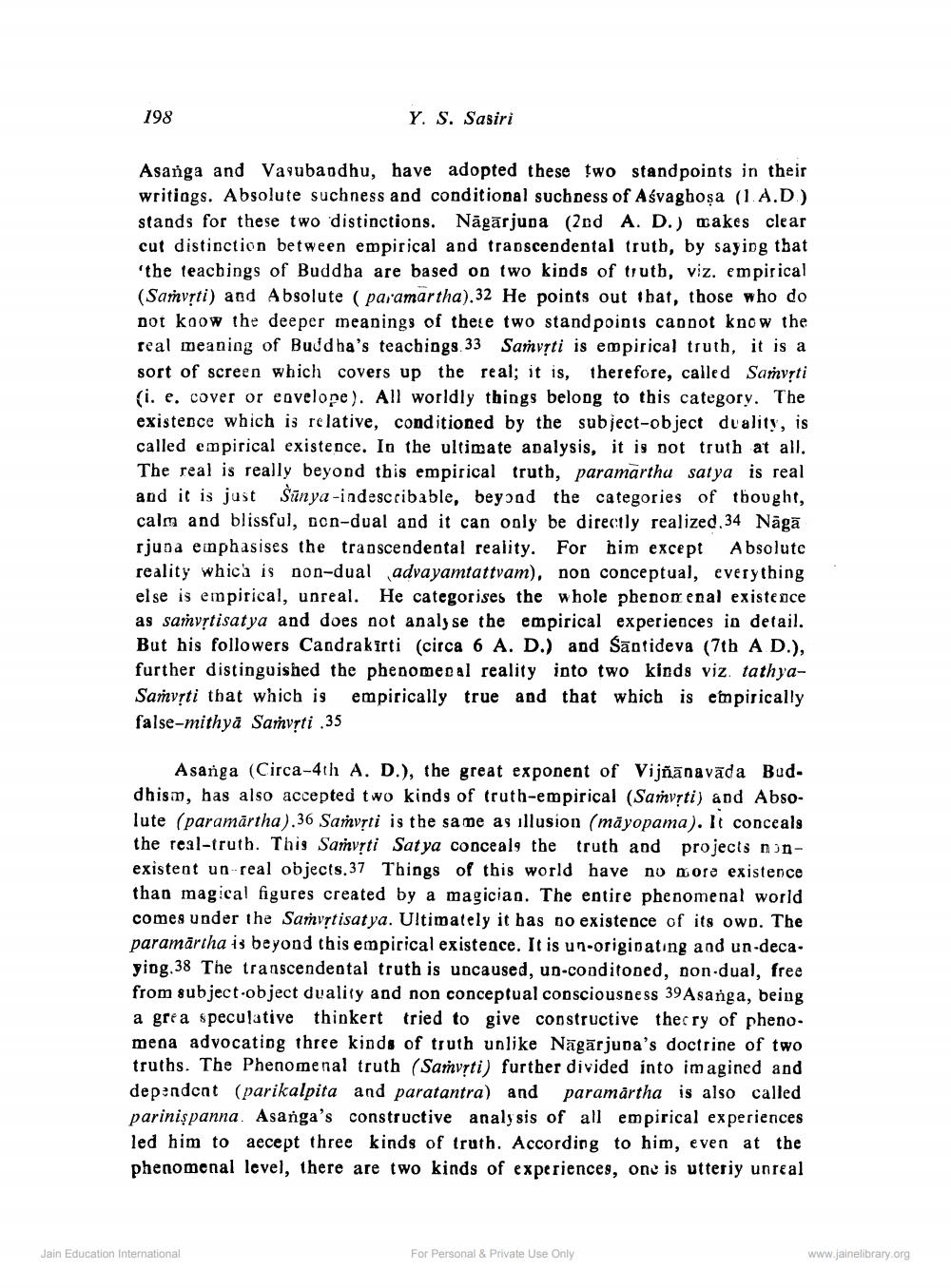________________
198
Y. S. Sasiri
Asanga and Vasubaodhu, have adopted these two standpoints in their writings. Absolute suchness and conditional suchpess of Aśvagboşa (1.A.D) stands for these two distinctions. Nāgārjupa (2nd A. D.) makes clear cut distinction between empirical and transcendental truth, by saying that the teachings of Buddha are based on two kinds of truth, viz. empirical (Samvști) and Absolute ( paramartha).32 He points out that, those who do not koow the deeper meanings of these two stand points cannot know the real meaning of Buddha's teachings. 33 Saṁvsti is empirical truth, it is a sort of screen which covers up the real; it is, therefore, called Samvíti (i. e. cover or envelope). All worldly things belong to this category. The existence which is relative, conditioned by the subject-object duality, is called empirical existence. In the ultimate analysis, it is not truth at all. The real is really beyond this empirical truth, paramarthu satya is real and it is just Šīnya -indescribable, beyond the categories of thought, calm and blissful, oon-dual and it can only be directly realized 34 Nāgā rjuna emphasises the transcendental reality. For him except Absolute reality which is non-dual advayamtattvam), non conceptual, everything else is empirical, unreal. He categorises the whole phenomenal existence as samvştisatya and does not analyse the empirical experiences in detail. But his followers Candrakīrti (circa 6 A. D.) and Sãotideva (7th A D.), further distinguished the phenomecal reality into two kinds viz. tathyaSamvíti that which is empirically true and that which is empirically false-mithya Samvíti .35
Asanga (Circa-4th A. D.), the great exponent of Vijñānavāda Bud. dhism, has also accepted two kinds of truth-empirical (Samvíti) and Absolute (paramārtha).36 Samvști is the same as illusion (māyopama). It conceals the real-truth. This Samvști Satya conceals the truth and projects nonexistent un-real objects.37 Things of this world have no more existence than magical figures created by a magician. The entire phenomenal world comes under the Samurtisat ya. Ultimately it has no existence of its own. The paramärtha is beyond this empirical existence. It is un-originating and un-deca. ying. 38 The transcendental truth is uncaused, un-conditoped, non-dual, free from subject object duality and non conceptual consciousness 39 Asanga, being a grea speculative thinkert tried to give constructive thecry of pheno. mena advocating three kinds of truth unlike Nāgārjuna's doctrine of two truths. The Phenomenal truth (Samvrti) further divided into imagined and dependcat (parikalpita and paratantra) and paramärtha is also called parinişpanna. Asanga's constructive analysis of all empirical experiences led him to aecept three kinds of truth. According to him, even at the phenomenal level, there are two kinds of experiences, one is utteriy unreal
Jain Education International
For Personal & Private Use Only
www.jainelibrary.org




